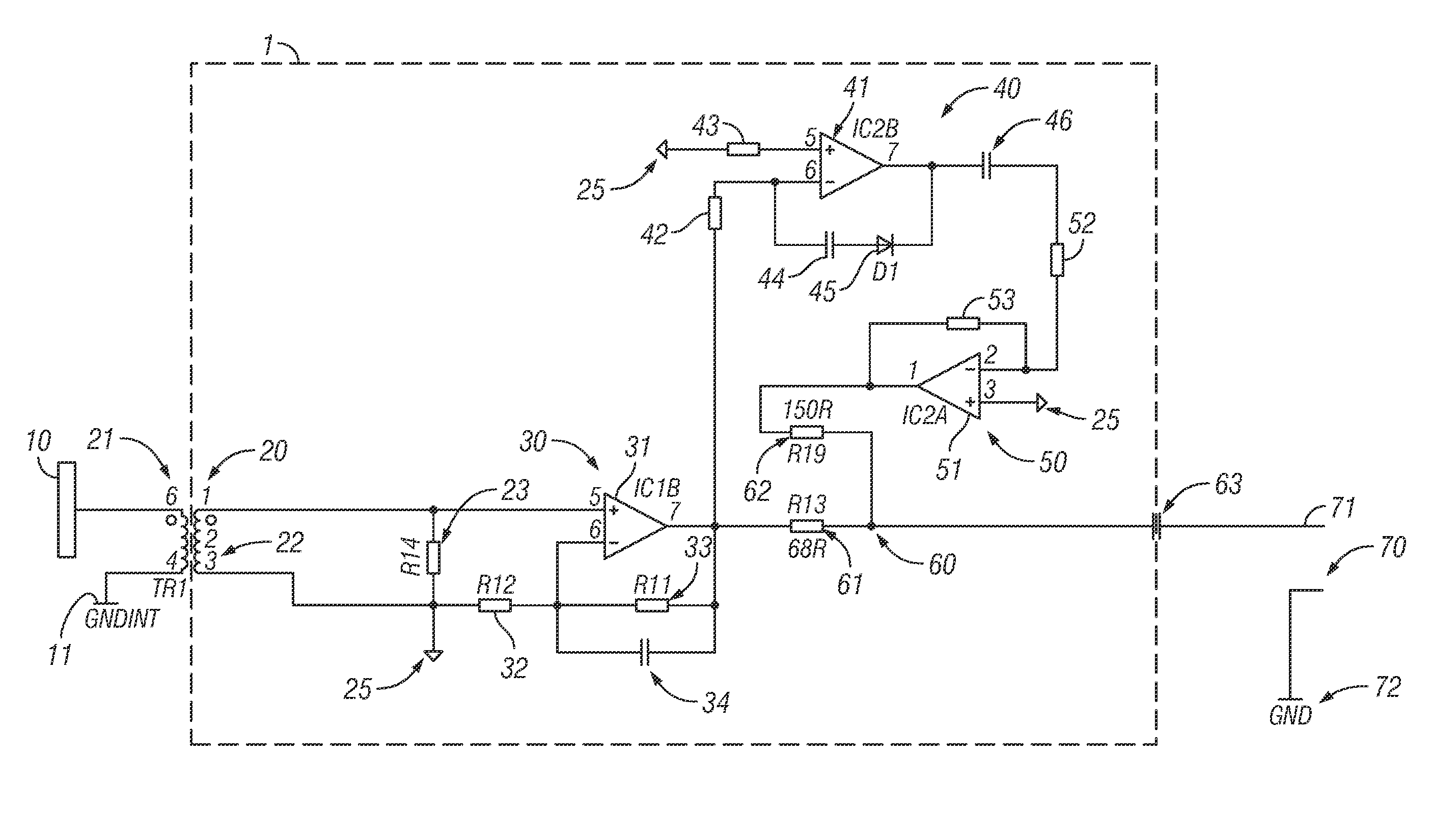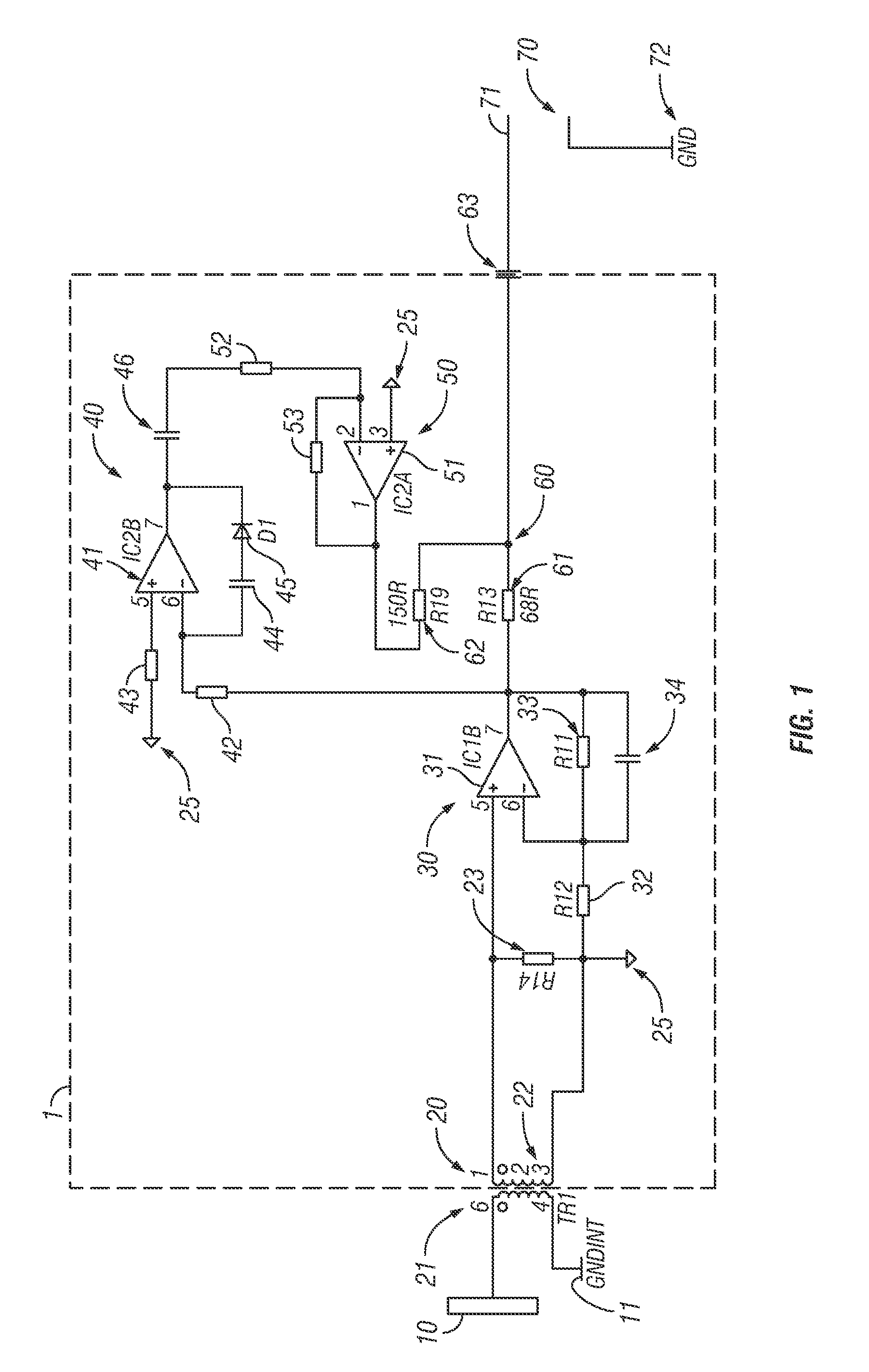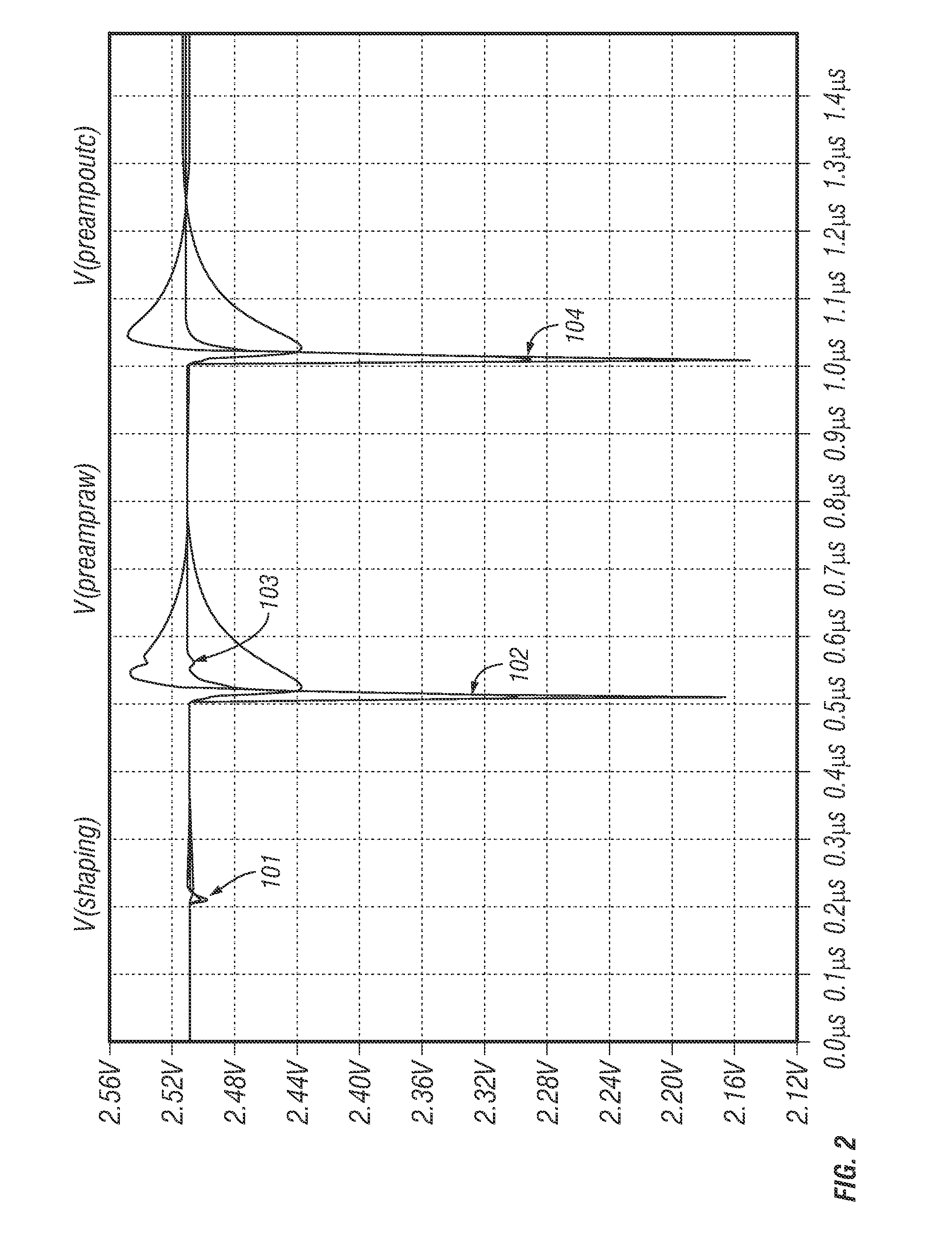Preamplifier for charged particle detection
a technology for amplifying particles and amplifying tubes, which is applied in the field of preamplifying for charged particles to achieve the effect of increasing the complexity of the apparatus (logic)
- Summary
- Abstract
- Description
- Claims
- Application Information
AI Technical Summary
Benefits of technology
Problems solved by technology
Method used
Image
Examples
Embodiment Construction
[0030]Referring first to FIG. 1, there is shown a circuit diagram of a preamplifier 1 in accordance with the present invention. The preamplifier receives a detection signal from a detection electrode 10. The detection electrode is referenced to a ground 11. The detection signal is provided as an input to the preamplifier 1 through a transformer 20. The preamplifier 1 comprises: a main amplification stage 30; an integrator stage 40; an inverting amplifier 50; and an output stage 60. An output port 70 is also provided.
[0031]The detection electrode 10 is a plate in a vacuum, where a cloud of electrons is absorbed. In view of the inherent negative charge, a negative pulse of finite duration is formed. This signal is applied across the primary winding 21 of the transformer 20. A secondary winding 22 is inductively coupled to the primary winding 21 in the transformer 20 and the non-DC component of the detection signal applied across the primary winding 21 causes a voltage to form across a...
PUM
 Login to View More
Login to View More Abstract
Description
Claims
Application Information
 Login to View More
Login to View More - R&D
- Intellectual Property
- Life Sciences
- Materials
- Tech Scout
- Unparalleled Data Quality
- Higher Quality Content
- 60% Fewer Hallucinations
Browse by: Latest US Patents, China's latest patents, Technical Efficacy Thesaurus, Application Domain, Technology Topic, Popular Technical Reports.
© 2025 PatSnap. All rights reserved.Legal|Privacy policy|Modern Slavery Act Transparency Statement|Sitemap|About US| Contact US: help@patsnap.com



